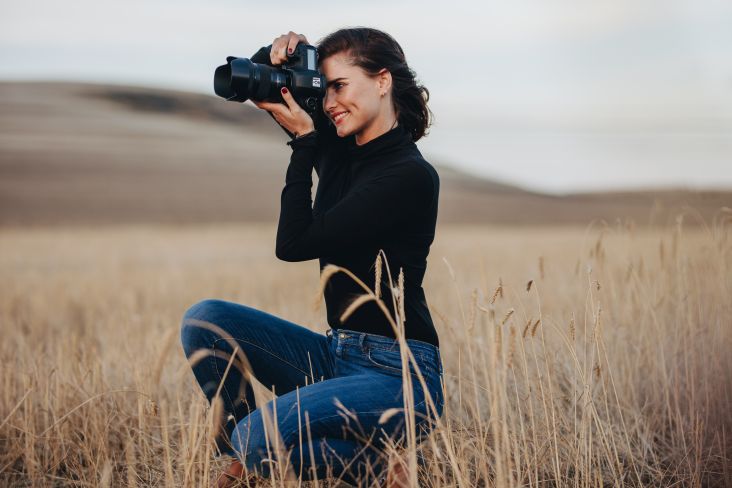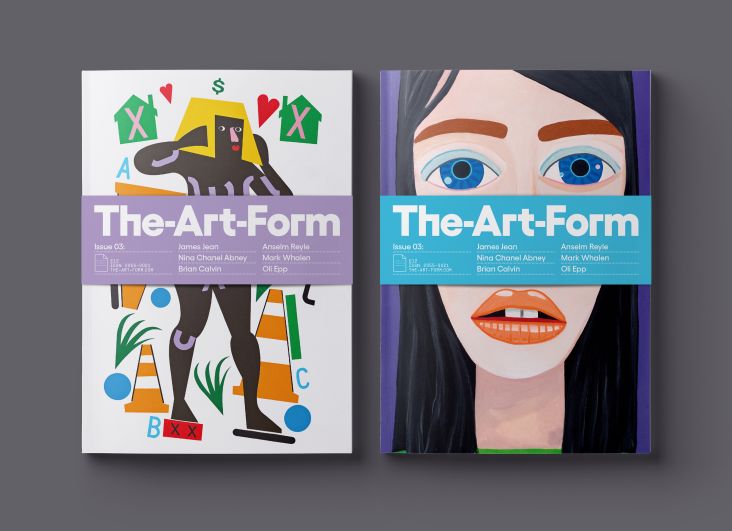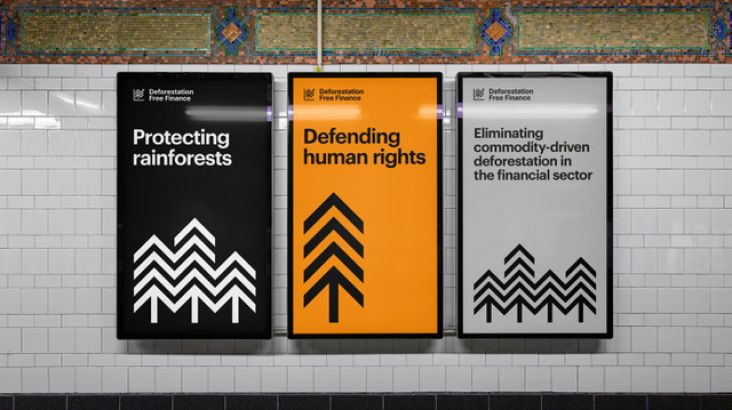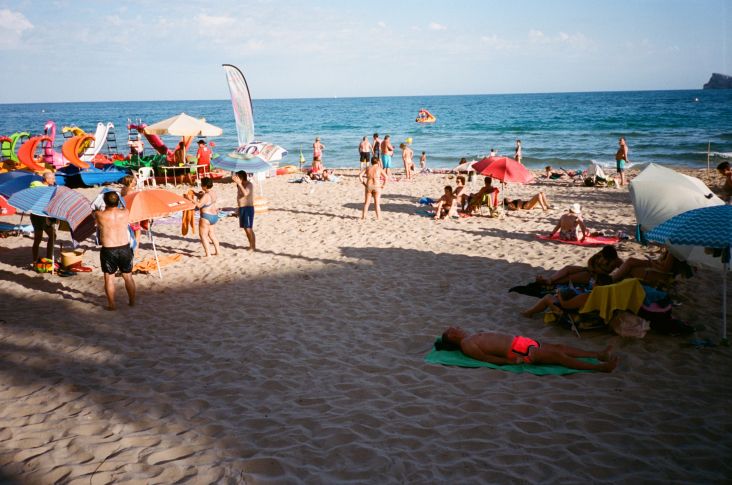Why artists and designers are moving out of big cities
Lockdowns and remote working have led many creatives to leave big cities for a quieter spot elsewhere. They tell us why, and explain how it's changed their outlook forever.

Image licensed via Adobe Stock
One of the biggest stories of the pandemic was the number of people who were swapping London and other big cities for a life in the countryside. We've read multiple accounts about urbanites finding happiness in a property by the sea or in a country village, only to return to the city a year or two later. But many have stayed, so we wanted to know: what were their reasons?
We spoke to graphic designers and illustrators, photographers or artists seeking a chance to settle where they hope to escape some of the issues that come with city living. In many cases, they've been moving back to the small towns or villages they originally grew up in but had to leave to find decent jobs. And often, their migration is helping to revive these rural and semi-rural areas, as they spend their incomes locally or even launch businesses there. Read on to discover what those creatives had to say.
"We left London to find more space and escape increasing rents."
It won't surprise you to hear that one of the big draws of moving out of the big city is the lower rents and extra space you can find elsewhere. Millie Poppins, a content creator around baby care and supporting millennial women in early motherhood, offers a prime example.
"I moved from central London to Langton Green, Kent, in January and couldn't be happier," she says. "I mostly work from home now within my online business and sometimes travel internationally. Before, I was in a cramped studio in the newly developed Battersea Power Station. I'm now living in a gorgeous one-bedroom modern farmhouse, which gives me Cameron Diaz in The Holiday vibes. And I'm paying half the price in rent."
After living in Aberdeen for the last 12 years, Fiona Robertson has followed a similar path. She's just moved to Brechin, a small town in Angus, with her fiance, James, and her living situation is now strikingly different.
"My Aberdeen flat was a one-bed with a busy road on one side of the building and train tracks on the other," Fiona explains. "I had a separate workspace, but it was basically a box room/cupboard with no window. The convenience of living close to family and all the amenities made it worthwhile."
After getting engaged, she and James started planning to move in together. "But neither of our flats was big enough, especially once James started his business too," says Fiona. "James is a virtual assistant for neurodivergent entrepreneurs, while I have two businesses: as a branding and web designer, and I also run an e-commerce shop, making and selling illustrated cards and gifts."
"Aberdeen property prices are stupidly high," she continues. "So we knew to find a home with enough space for us both to work from. We'd both dreamed of getting away from the noise and bustle of the city and living in the countryside. So when we found our new home, in a quiet spot with beautiful views, we knew we had to buy it.
"We're still unpacking, but once we have more time, we've got parks and a riverside walk to explore, and the Cairngorms national park is right up the road. We can't wait to get out and make the most of what our new location offers."
"We wanted nature 'on tap'."
In Britain, much of the countryside is quite close to the city. So in some ways, you can have the best of both worlds. That's certainly what Rebecca and Michael of Maywild Studio have found, anyway.
"We ensured our move was still near the city, as we definitely need our city fix," Rebecca explains. "But ultimately, the time came to fully immerse ourselves in the space and beauty of nature; to have it 'on tap' for us, our family and our creative practice. And we've never been happier.
"Our move to the countryside from the city was very much part of a healing process for us and also a fresh start," she adds. "The countryside and nature were always very much in us, but we felt we had to be ready for that shift. We've always seen both urban and rural environments as a positive and a source of creative inspiration, so we don't necessarily differentiate between the two."
"You get a different kind of inspiration here."
Scotland-based brand builder and art director Asa Rodger also hasn't moved too far from the city, yet the move has still had a big impact on him. "We moved ten miles south of Edinburgh: just enough to escape the city and be at the first patch of countryside," he explains. And he certainly doesn't believe you need to be in a big city to get creatively inspired.
"Your inspiration doesn't always have to be design exhibitions, art galleries, online articles and metropolitan architecture," Asa points out. "Moving to the countryside gave me other things to be regularly inspired by. I can swipe an idea for a colour palette from a petal on the tarmac road, a sound from a trickling river, or a photography direction from sun-soaked hazy meadows."
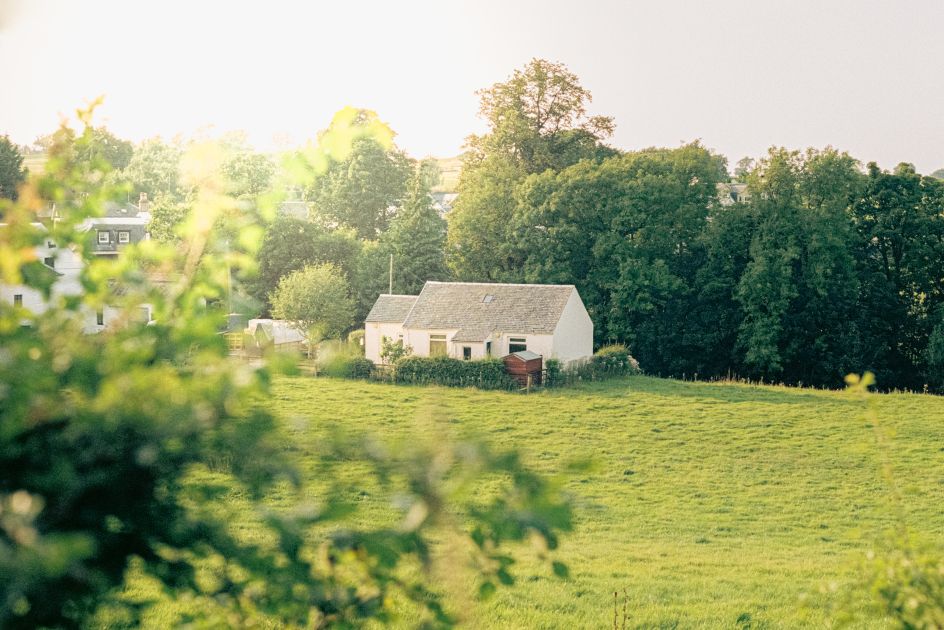
Asa Rodger's new countryside home
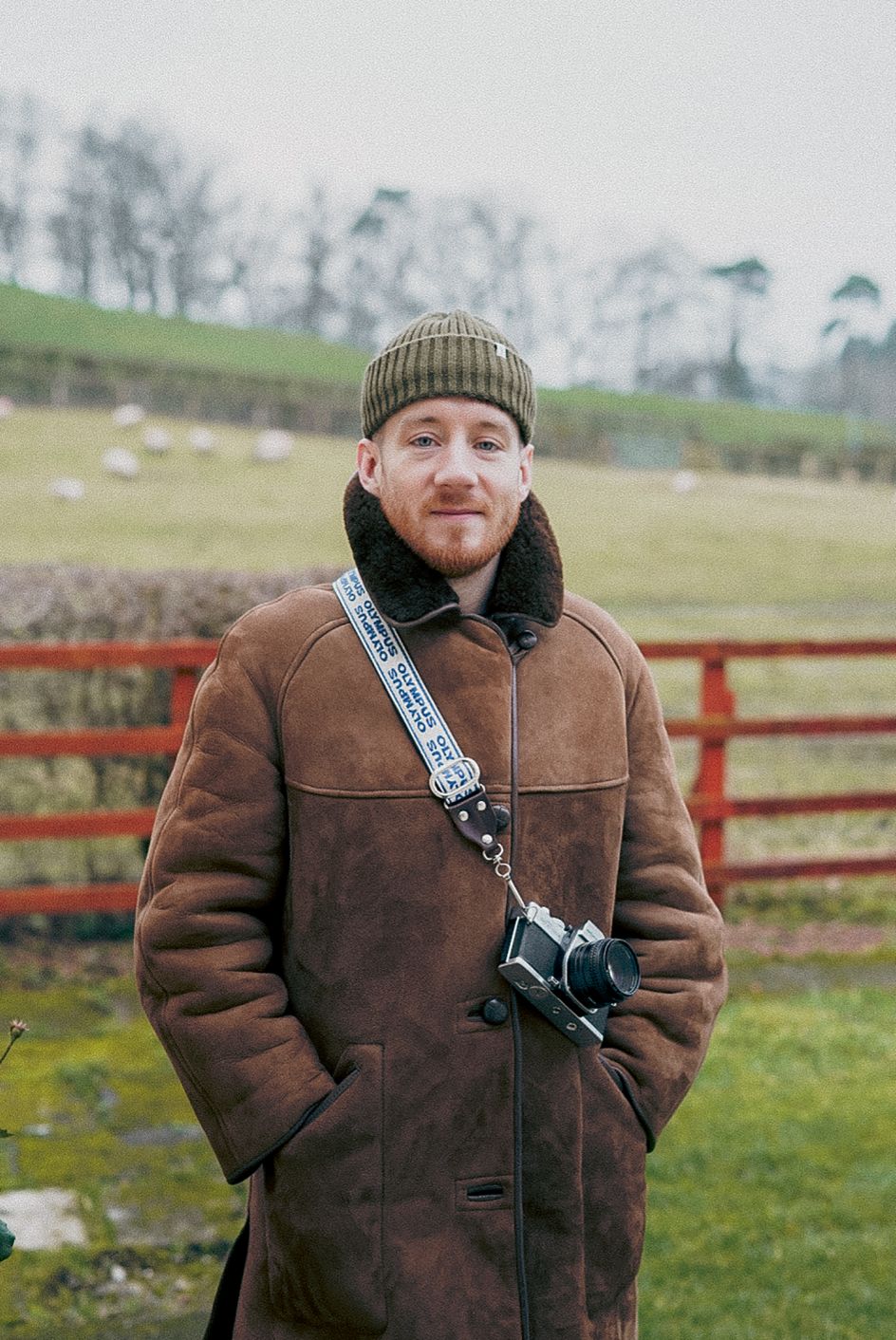
Asa Rodger
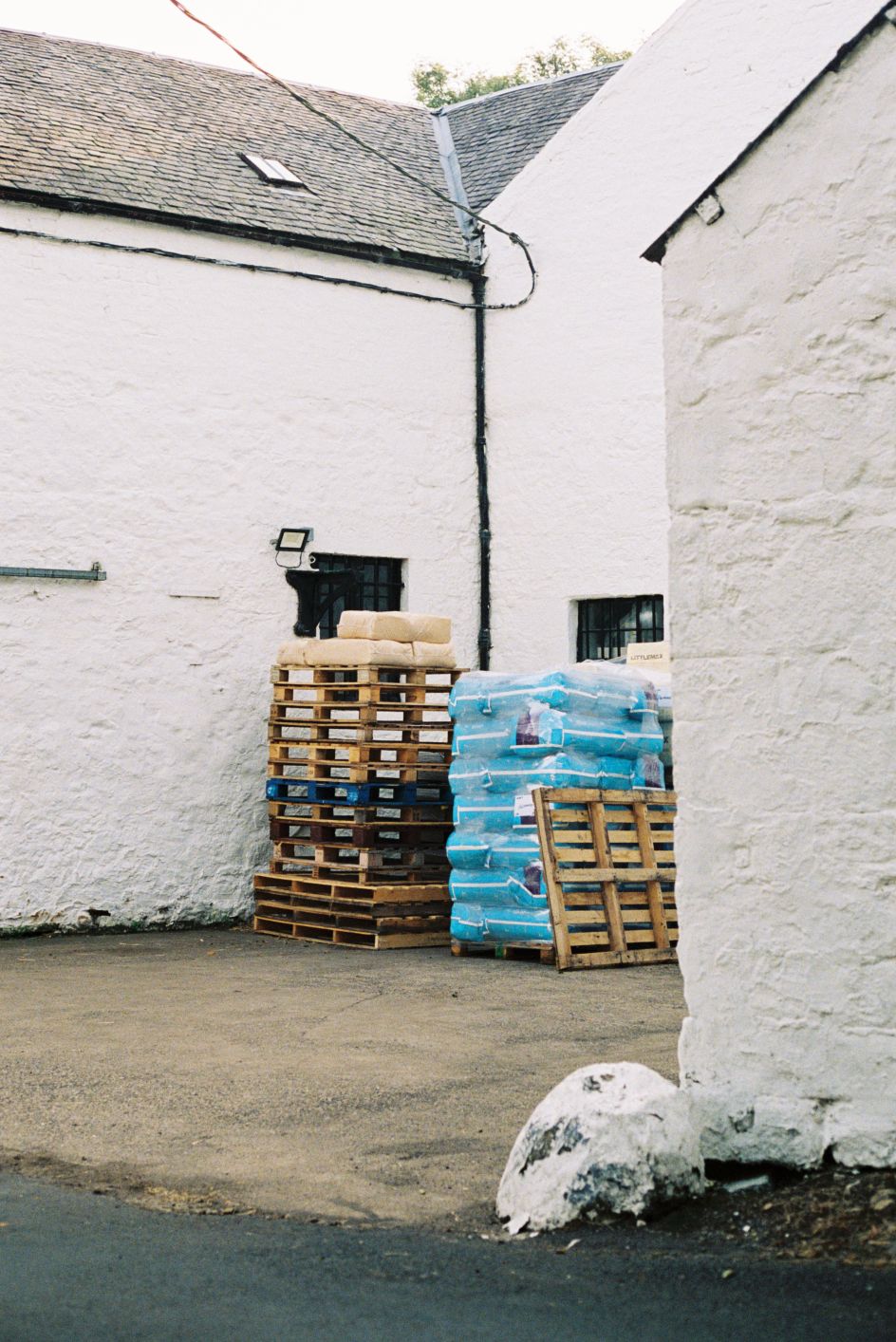
Asa Rodger's home
You have to be careful not to get too isolated, though. "Being aware of the increased potential for loneliness is a crucial step in thriving beyond the city walls," he says. "So while I'll always get the headphones on and hammer through the deep work at my home desk, I'll also break things up by tackling admin in a wee coffee shop, with some ambient bustle around. Simple moments of chit-chat and having people to bounce around ideas with can't be overlooked.
"I'm blessed in having a partner who's a writer and fantastic creative soul, but there are other ways to break things up," he adds. "Sometimes, I'll head into the city to borrow a desk in friends' studios and periodically get myself among other industry minds. If you can call in those kinds of favours, it can really help.
"Other times, it's good to bite the bullet and pay a fee to rent a desk in a creative hub like Edinburgh's Custom House. If I'm somewhere like that, I'll make the most of it, meeting some industry peers, drinking good coffee and soaking up the inspiration of city life and startup cultures. Collaboration is another good way to fight isolation. I've been teaming up with the formidable Kirsten Murray, another freelancing art director who is an absolute creative powerhouse. As we both come from an agency background, we've been loving the work of a joined mind and having a team again, so that's a nice option for changing the monotony of being a 'sole' trader."
Another benefit Asa has gained from living and working in the countryside has been a sense of calm. "It's no secret that the industry is riddled with anxiety," he points out, "and the countryside offers quick and easy ways to ground me. Irritated with a design? I can sit with the sun on my face and listen to birds chirping for ten minutes. Prickly client conversations? Stand with my feet in the grass and my eyes on the horizon. Sometimes these things can feel a gentler ride than another coffee run or a scroll round the web."
That said, Asa believes a balance is nice if you can find it. "If you're looking for country living as a commercial creative, I'd recommend finding ways to still visit a city semi-regularly, make sure you can get damn good Wi-Fi, and build in time to get a couple of face-to-face creative catch-ups or meetings with clients. It's cool working in a city and seeing things like Indiana Jones being filmed cracking his whip in the streets, but it's just as cool seeing a beautiful buzzard swoop down into your garden for a lunchtime stroll."
"Life in London felt too small."
Big cities offer lots of opportunities. But paradoxically, life there can sometimes feel very limiting. And that's exactly how Ben Brignell, a freelance digital product designer and artist, came to feel.
"I'd lived and worked in east London my whole life," says Ben. "And I loved London to death. But a switch in my head got flicked on one day, and I realised I wanted the country, space, quiet and sky. So we moved to East Suffolk and are now surrounded by fields, as far as the eye can see."
And it wasn't just about how he wanted to live, but how he wanted to work, too. "I instantly had a clear vision of how I'd fold living in the country into my working life," he recalls. "I'd continue what I already do, building digital products, but start leaning towards making physical ones too. The idea was to bring my environment into my working processes and do more of the things I couldn't do before because my life in London felt too small: making physical things, furniture, prototypes, wooden bowls, growing things, creating music, being loud."
He's currently renovating a barn and turning it into a workshop/studio where he can continue his design business, as well as have the space to make physical products and work on his art. And it's changed his life in big and small ways.
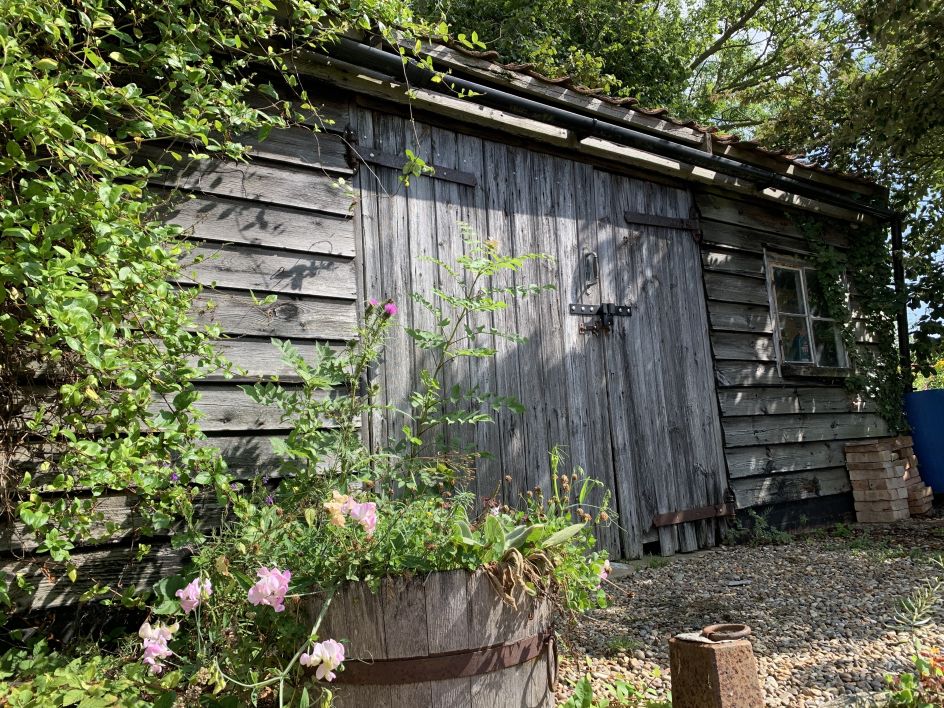
Ben Brignell's barn
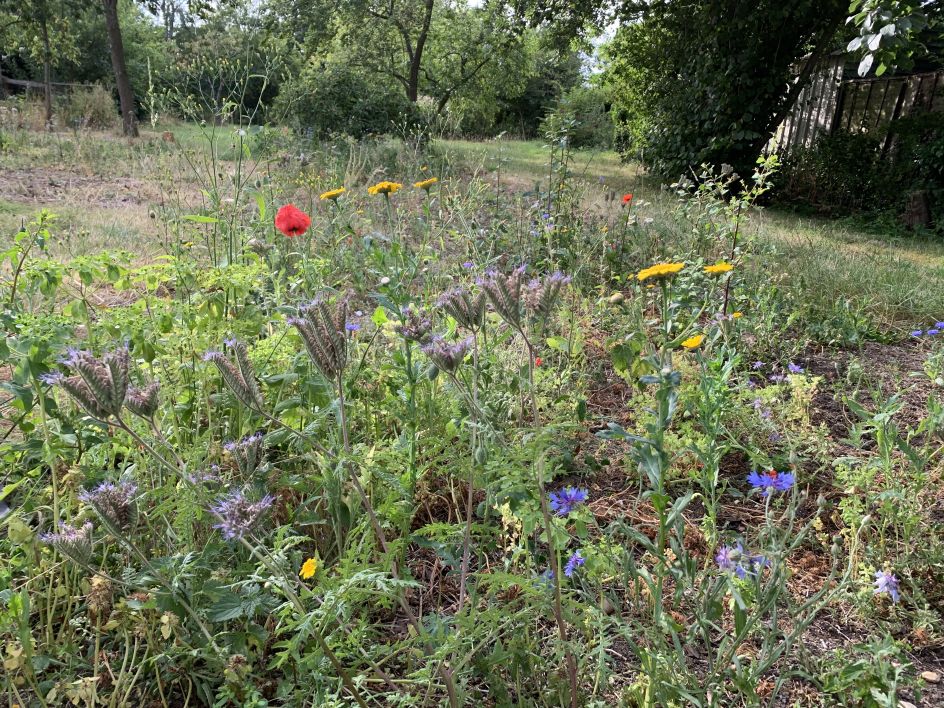
Ben Brignell's wildflower meadow
"Some of the changes are fairly superficial," he says. "I always carry a sketchbook, and I used to draw my surroundings and urban sketches on my commute. Now I don't commute but draw firewood and wildflowers. You can see this transition on my Instagram."
It's also changed the way he plans and spends his week. "I've re-wilded a large piece of land into a wildflower meadow and factored aspects of that into my routine. I've built a large vegetable garden. These projects quickly became part of my working day and had their own deadlines and tasks, which ended up on my to-do list. The ground had to be cleared, prepared, conditioned, and seeds planted – all by certain dates, just like my work. Sometimes I'll be blocked on a Trello board by a stakeholder. Other times I'll be blocked because of the weather."
That doesn't mean there haven't been terrifying aspects to leaving London. "I used to meet founders or companies for coffee and always had a reliable list of people I wanted to work with, and that wanted to work with me," he recalls. "Just being out and about in London always resulted in opportunities. I don't even think I have a list like this anymore. But there was a leap of faith needed to make a move, and so far, it has paid off."
"We moved to plan a part-retirement."
Award-winning creative director and deputy president of D&AD Jack Renwick had been living in Walthamstow, east London, and running her own branding and design agency in Whitechapel, for almost a decade. Although both her London home and studio remain, last year she made one of the biggest life changes any of us could possibly imagine.
"My husband Chris and I bought a 44 chalet holiday estate, some old stone barns, an old petrol station, some stables and 30 acres of land and beach on the shores of Loch Fyne in Scotland," she explains. "We've been here just over a year."
The wasn't completely on a whim. "We'd briefly discussed the idea of buying a house in Scotland one day with some land and running a pop-up campsite in our retirement. We don't have children and thought a campsite would be a fun way to have some buzz and fun around, rather than us in an isolated house." But that dream had previously been hazy and far-off.
Then came the Covid pandemic, and Jack was on a list of clinically vulnerable people due to an earlier kidney transplant. "I spent 15 months shielding between two small rooms at home, isolated from Chris for half of that period," she recalls. "We both ran our creative businesses from home, and our teams had adapted quickly. When I was allowed out and able to travel, we booked a trip home to Scotland to wave to our families and organised a few days' break in Argyll to explore the 'secret coast' area and see some houses for sale. That was the start of our recce of where we might want to live one day."
One day during the trip, the couple decided to eat at Inver, a restaurant they'd heard many great things about, but couldn't get a table until the following week. "Realising we could now work from anywhere, we extended our stay to get the booking," Jack recalls. "After an amazing meal and, I'm sure, on a wine high, I spotted the holiday estate on Rightmove and went to see it the next day. Now we're here, ten years earlier than we'd imagined moving to Scotland, and are running a design agency, an animation agency and the holiday park from here.
"We plan to convert the barns into a studio and run a small design school there and a creative retreat with kayaking, wild swimming, fishing, etc. And turn the old petrol station into a Gin distillery or Cycle cafe. Or do nothing and just look out the window."
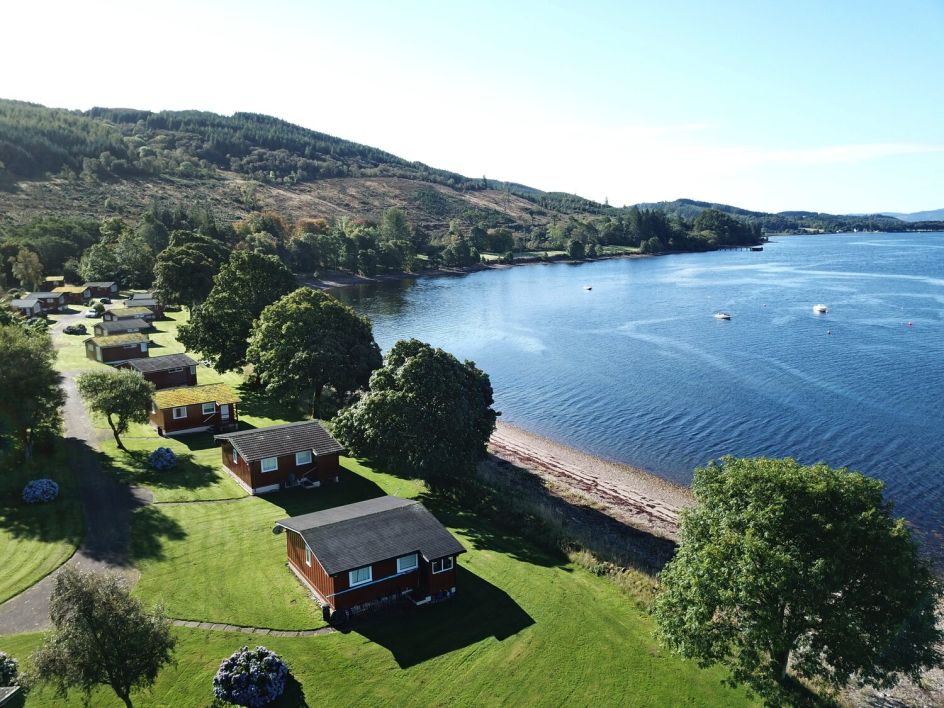
Jack Renwick's new location
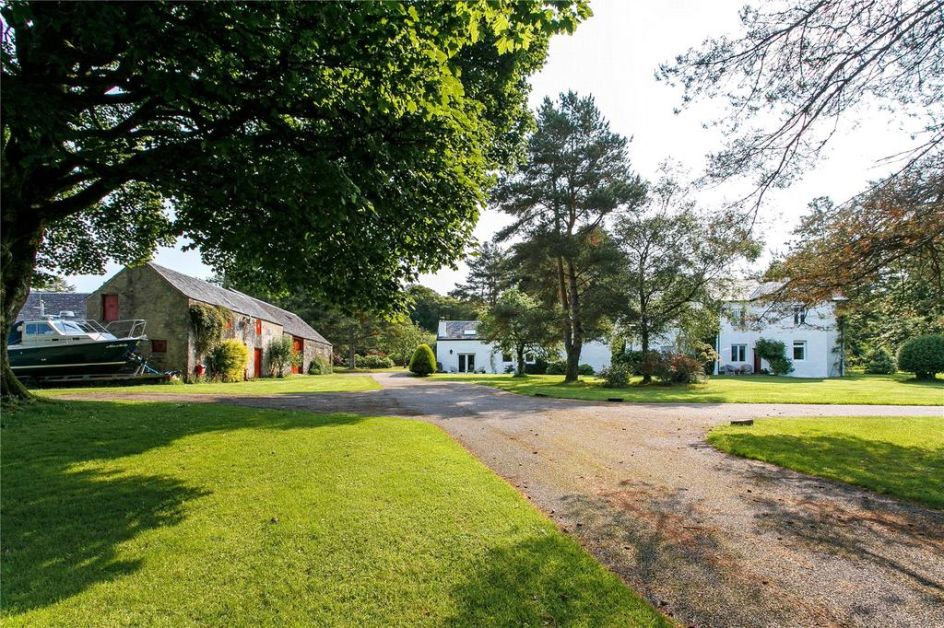
Jack Renwick's Scottish home
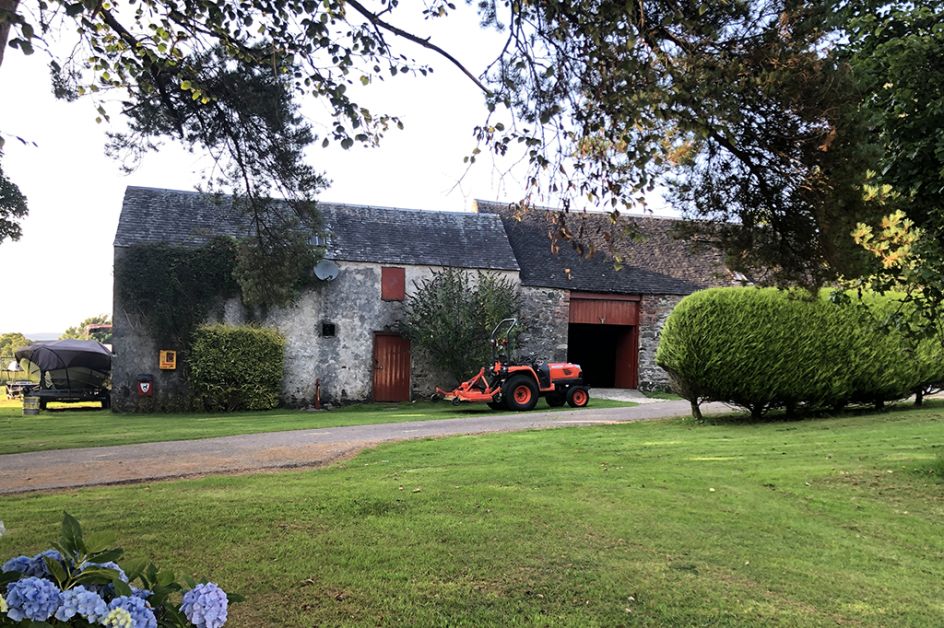
Jack Renwick's Scottish home
Recently, Jack has been learning how to be a groundskeeper, drive a tractor, use a chainsaw and drive a boat. Compared with London, she says, "It's much colder, in the middle of nowhere, and there are no 24-hour shops nearby. In fact, there are no shops at all nearby."
What's changed for the better, though, are the views. "We are on the shore of Loch Fyne, the view is beautiful, and the sky is dramatic and different every day," she says. "Plus, having to be physically active every day in doing this job, as opposed to being desk-based, is helping our health and wellbeing."
"You don't need to be in the city to attract clients."
For most creatives, the move from city to countryside is a one-way journey, but for Jamie Kelly, founder and creative director of Sun Design, it's been more of a circle.
"I started Sun from a small two-man office in Rossendale, slowly moving up to a larger office to accommodate four of us," he explains. "We loved the studio we were in, and we were really happy there. But the pandemic hit, and the offices were all closed, which was very difficult for a creative team. Once we were able to return safely, the team couldn't wait to get back into the studio environment, but we always had the itch to try Manchester."
Jamie had spent a large part of his career in the city, working in agencies and client-side with The Co-op. "So I knew what it entailed: the commute, the cost, the hustle and bustle. We thought it would be a good move from a talent attraction perspective and that it would make us more accessible to current clients, as well as more appealing to new ones. The team were really on board with being in the city, and due to the pandemic, office spaces were easy to come by, and the costs were a little lower. We found a great space on Quay Street and went for it."
After just six months, though, they decided to move back to Rossendale. "Initially, it was great to be in the city," Jamie recalls. "However, the commute and time constraints weren't great, and the costs of parking, petrol and lunch were high. Also, the social scene was still trying to get back on its feet. All in all, we just didn't enjoy being in Manchester as much as we'd anticipated. The pros of appealing to talent and new clients didn't really have any effect. And although we were still busy, we rarely saw clients, and the benefits of being in town didn't outweigh the other logistical factors."
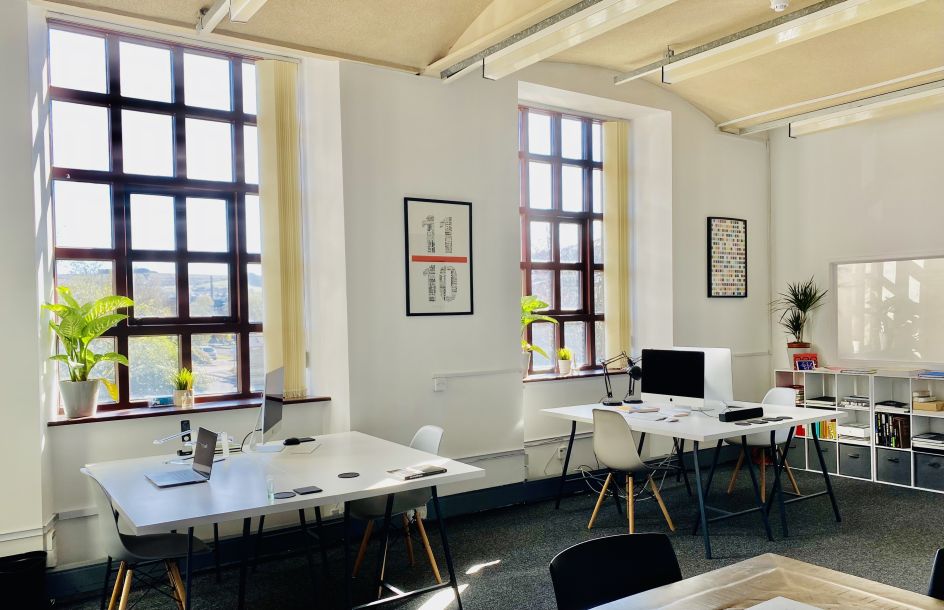
Sun Design's Rossendale studio
After six months, they decided they'd all work from home and meet up weekly in a co-working space. "We tried several of the amazing spaces in Manchester, but once a week wasn't enough for us to be as effective as we could. I gave the team the options, and it was a unanimous decision: move back to sunny Rossendale. We found a great studio in a large mill just on the outskirts of Rawtenstall, and we've been here for 18 months.
"To be together in a space that we love and share is pushing us on to doing great work with great clients. We've grown the team since leaving Manchester, and in terms of clients, we have an incredible roster, most of which have come whilst being based in Rossendale. For the moment, being based outside the city is the best for us as a studio."
"We realised we were introverts and city life didn't suit us."
In 2018 Lara Hanlon was working as a senior designer at IBM in Dublin, and got offered a new role in New York City. "It was the chance of a lifetime," she recalls. "My partner and I packed our bags, left our Dublin residence, and headed for the Big Apple. We set up camp in Brooklyn. My job with IBM at the time was as a visual design lead for Carbon for IBM.com, the design system for one of the biggest websites in the world."
There were there for about ten months, and then the pandemic hit. "We saw the streets of New York go quiet for the first time," Lara remembers. "In the summer of 2020, we lived through Black Lives Matter protests, Trump campaigns and riots, and watched the Covid' Death Ships' roll into New York harbour. It was intense, to say the least."
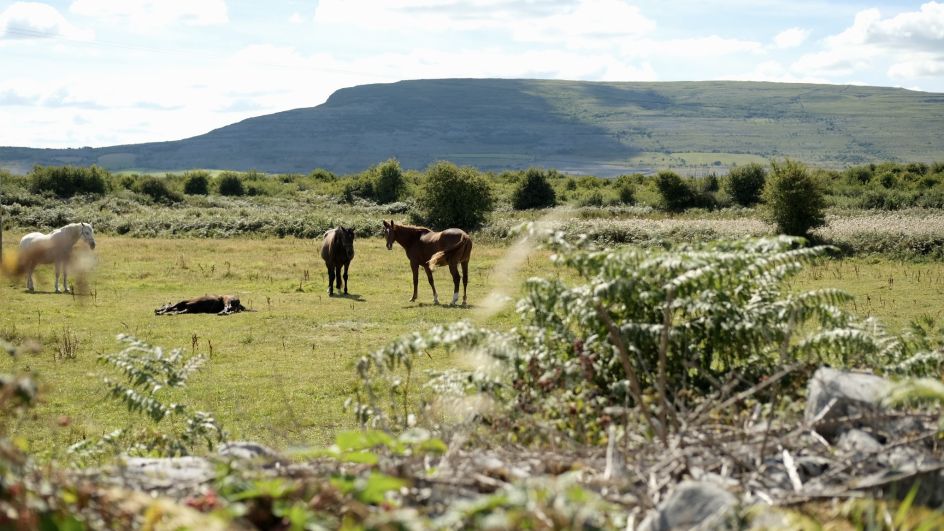
Lara Hanlon's new view from home
Continuing with IBM from her basement apartment, she later switched positions and worked as a design lead for IBM Research, specifically on brand, web, and product. "Like many people around the world, I spent a lot of time during lockdown reflecting on my skills, needs, and wants as both a designer and human being," Lara explains. "My partner – a music producer – and I realised that while New York is an incredible place, especially for creatives, our hearts and minds were set on home."
And it wasn't just about lockdown itself but went deeper. "Lockdown helped us to realise that city life was not for us," says Lara. "At our core, we are introverted nature lovers, yet we were forced into a life of excessive materialism in a very noisy and chaotic city. We're also entrepreneurs, and during the pandemic in New York, I began to build my own design company. It was always a dream of mine to do something personal and purposeful."
The couple returned to Ireland in 2021 and now live on the west coast. "We couldn't be happier," says Lara. "I work from home, and I'm growing my company – Portion Collaborative – after launching earlier this year. Working in the countryside allows me to connect with nature, which helps me to manage my anxiety, nurture my creativity, live more sustainably, and ultimately be more 'me'."
"There's a wealth of talent in the sticks."
Illustrator Matt Murphy left London for Dorset, and gets frustrated with the stereotypes associated with such a move. "When you mention to someone that you've moved to the countryside, the immediate assumption is you have money, and you've bought the perfect country house," he notes. "For us, that wasn't the case at all. We both come from very working-class families. My partner grew up here in Dorset, and we moved in 2006 from London for her work.
"We rented a small house with two bedrooms, one of which became my studio, and a tiny kitchen. There was barely enough room to live in. I knew no one and spent all day in the studio, working and missing London."
At first, Matt found the move away from the capital terrifying. "I felt like I was constantly missing out on jobs, get-togethers and awards," he says. "And I worried about where my inspiration would come from and where the art galleries were. I realised I'd need to be more organised and work harder to keep motivated and inspired."
So that's just what we did. "I made sure I connected with London once a month, showing my folio to as many people as I could in 24 hours and visiting as many exhibitions as I could without burning out my eyeballs," he recalls. "But I also started looking locally and realised that there was, in fact, a wealth of creative talent in the South West: great artists, creatives and makers right on my doorstep."
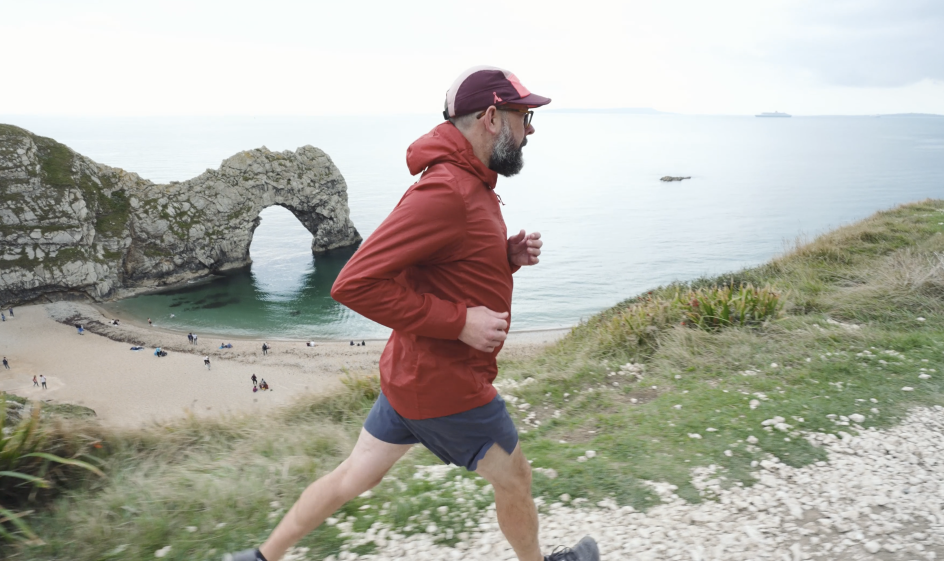
Matt Murphy
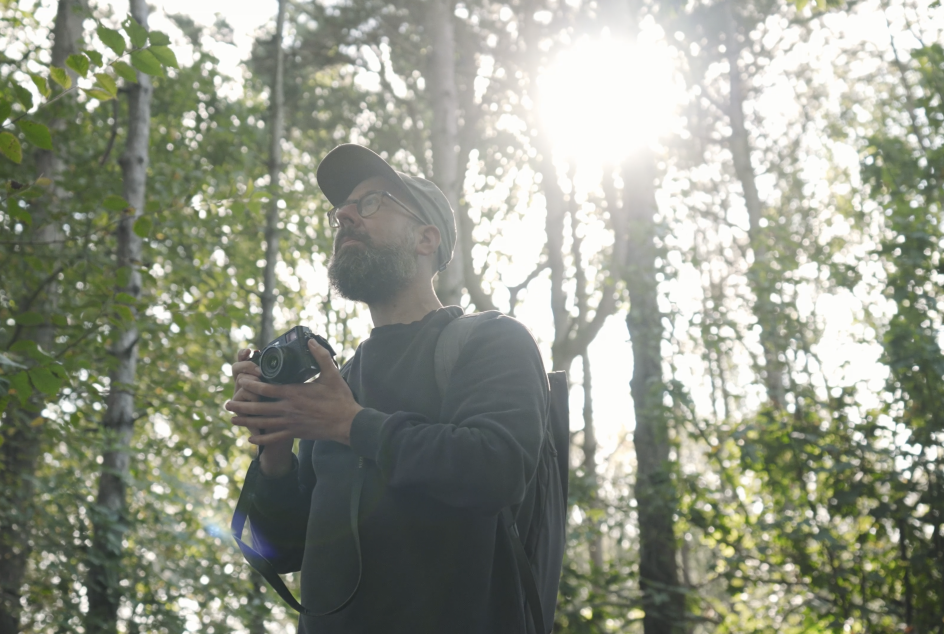
Matt Murphy
It's taken him a long time to feel at ease in Dorset, but slowly it's become home. And it's now complementing his home life and creative work, although not in the way you might expect.
"People think as you move to the country, your work will change, and you'll suddenly start drawing hills and trees every day. This hasn't happened to me," he says. "If anything, I feel more of a draw to create illustrations of suburban or inner city lives. Similarly, when I lived in London, I drew far more landscapes and woodlands. I guess I'm attracted to creating work that illustrates what I don't have!"
While the countryside is not shown directly in his work, though, it influences his general approach. "Being here gives me the space and the calmness to breathe and grow," Matt explains. "Days spent on the coast refuel my creativity as much as any exhibition. And I've gone from a smoking, drinking night owl to someone who wakes up at 6am and goes for a two-hour run before going to the studio. Would this have happened if I hadn't moved down to Dorset? Who knows, but it definitely helped!
"Overall, it's taken time, and it's taken commitment and hard work to live a creative life outside of a major city. It was lonely for a while, but it's changing for the better. I think people are more confident to leave London these days and know they can still succeed in the UK as an illustrator."




 by Tüpokompanii](https://www.creativeboom.com/upload/articles/58/58684538770fb5b428dc1882f7a732f153500153_732.jpg)


 using <a href="https://www.ohnotype.co/fonts/obviously" target="_blank">Obviously</a> by Oh No Type Co., Art Director, Brand & Creative—Spotify](https://www.creativeboom.com/upload/articles/6e/6ed31eddc26fa563f213fc76d6993dab9231ffe4_732.jpg)








 unites vegans and meat lovers with tasty new identity for a plant-based food startup](https://www.creativeboom.com/upload/articles/fe/fe52890414f664bcc985e763dd2a52e863cee31c_732.jpg)


